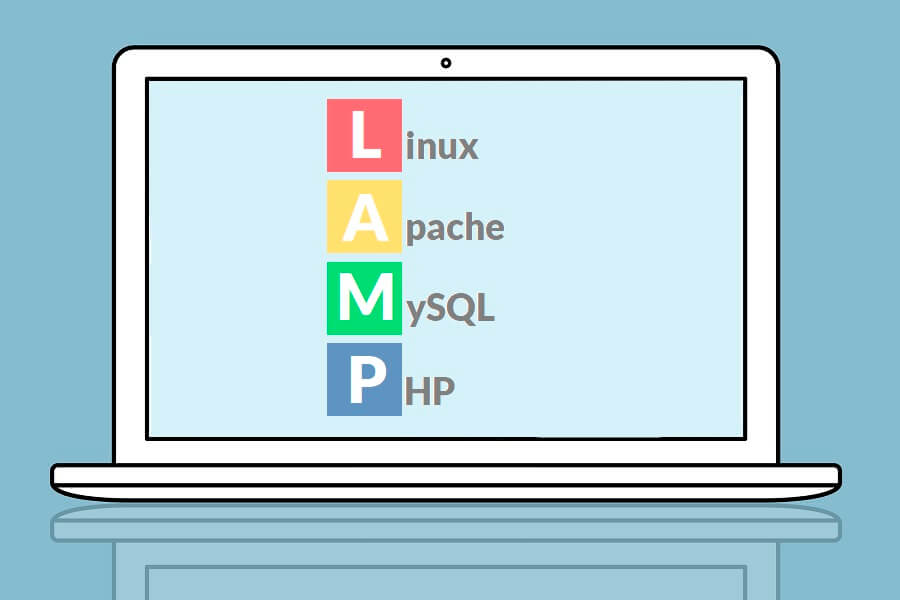A Linux engineer is an engineer who specializes in handling Linux among infrastructure engineers. This time, I would like to introduce the detailed work contents, the annual income that you actually get, and the future demand that you are worried about if you aim from now on.
1. What is a Linux engineer?

A Linux engineer is a type of infrastructure engineer, especially a server engineer, and refers to an engineer who specializes in using the OS called Linux.
1.1 Linux engineer definition
Now, I would like to explain the definition of Linux engineer in a little more detail.
■ A type of infrastructure engineer
Linux engineers are occupations that belong to “infrastructure engineers” when classified into major categories. Infrastructure engineers are mainly in charge of IT infrastructure design, construction, management, and transportation, and the occupations called network engineers and server engineers fall under this category of infrastructure engineers. Among these server engineers, engineers who specialize in using Linux are called Linux engineers.

■ Linux-specific human resources
As mentioned above, a Linux engineer is an infrastructure engineer who specializes in Linux.
Linux is currently the mainstream server OS . The reason is that it uses the GPL (General Public License) license system, which allows you to freely modify and redistribute it, that is, it can be used free of charge. Therefore, it is cheaper and more cost effective than installing a paid server OS.
The fact that you can modify it more freely means that you can see the contents of the code. Therefore, when an error occurs, it has the advantage of being easy to identify where it occurred.
In addition, since the configuration can be changed flexibly, many ultra-lightweight distributions are offered to take advantage of this. Therefore, it is easy to operate lightweight even with low performance equipment.

2. Roles and work contents of Linux engineers
![What is a Linux engineer? Explains work content, annual income, qualifications, current demand, etc. [Freelance engineer project information | Professional engineer]](https://proengineer.internous.co.jp/topics/wp-content/uploads/2020/10/column_image17158_1-3.jpg)
The work of a Linux engineer is as follows.
| Requirement definition | Hear customer requests and consider what to configure |
|---|---|
| design | Consider which hardware to use and what settings to use |
| construction | Procure and connect the actual machine and set according to the designed contents |
| test | Make sure it’s done as designed |
| Operation / maintenance | Monitor the operating status and respond when trouble occurs |
2.1 Requirements definition
First, we will hear from the customer about the required functions and performance, and consider what kind of system to build. We will consider the direction of Linux server design and aim to build a highly usable and highly reliable infrastructure. At this stage, a thorough pre-assessment and POC will be conducted to determine the applicability of OSS products, virtualization, and migration.
2.2 Design
Consider the standard configuration. If necessary, perform “security design” and “select driver and firmware versions” while being aware of compatibility with the hardware to be used. Also, the setting values of various servers are decided here. In addition, it is necessary to make detailed decisions such as log management and other measures after the start of operation.
2.3 Build
We will procure the equipment and build it by actually connecting it. We will install his OS (Linux) and middleware (Apache and MySQL) on the server equipment according to the determined standard configuration. Here, it is necessary to firmly build a highly usable and highly reliable infrastructure.
2.4 test
Make a detailed check to see if it works as described in the design document.
2.5 Operation / Maintenance
We monitor the built server every day to see if it is operating normally, and if a failure occurs, we will promptly troubleshoot it.
3. Skills required of Linux engineers
![What is a Linux engineer? Explains work content, annual income, qualifications, current demand, etc. [Freelance engineer project information | Professional engineer]](https://proengineer.internous.co.jp/topics/wp-content/uploads/2020/07/column_image16363_1.jpg)
The skills required of Linux engineers are not limited to Linux skills and knowledge. This section introduces the skills required for Linux engineers other than those related to Linux.
3.1 Communication skills
Communication skills are also important for smooth communication with customers and accurate requirement definition.
IT infrastructure is being introduced not only in IT-related industries, but also in services in various fields and scales such as distribution and manufacturing. In other words, not all customers are knowledgeable about IT infrastructure and Linux, so the skills to extract and understand what customers really need are important.
If there is a discrepancy in recognition at the requirement definition stage, it may cause service down or error later, and it may damage the customer.
3.2 High level of understanding and development experience of various open source software (OSS)
In order to meet the various needs of customers, it is also important to have knowledge and utilization skills of various open source software (OSS) other than Linux.
3.3 Assessment
In the work of Linux engineers, there are many projects such as migrating existing systems to Linux and developing systems that meet customer requirements by utilizing OSS.
It is necessary to thoroughly perform an assessment * 1 and PoC * 2 in advance to determine whether OSS products are applicable, virtualizable, and migrateable. In addition, it is necessary to consider and formulate a migration method, evaluate the degree of impact on performance and operation due to virtualization, and formulate a work plan for each process.
Therefore, knowledge that enables accurate assessment is required.
* 1 Assessment: Evaluation of design and migration based on surveys and analysis conducted on the desk, etc.
* 2 PoC (Proof of Concept): Proof of concept = verifying whether new concepts and ideas are feasible
3.4 Business knowledge such as accounting and production control
Especially for business applications, when the purpose is to develop applications such as accounting and production control, the skill to have business knowledge suitable for the site and to compile specifications from the user’s point of view as appropriate. You will need.
3.5 Programming skills
In order to design a system, even non-programmers need to have a good understanding of what programming can do.
Programming skills are also important for Linux engineers, as there are occasions when immediate code correction is required in the field.
4. Qualifications to help Linux engineers
![What is a Linux engineer? Explains work content, annual income, qualifications, current demand, etc. [Freelance engineer project information | Professional engineer]](https://proengineer.internous.co.jp/topics/wp-content/uploads/2020/07/column_image16217_7.jpg)
There are two qualifications that can be useful to Linux engineers: Each test has the following characteristics.
• LinuC:
Qualifications that emphasize being in line with business practices in USA
• LPIC:
An international exam that is qualified outside of USA
4.1 LinuC
LinuC is a test that places particular emphasis on being in line with the practices of Linux engineers in USA. Especially for those who want to become an infrastructure engineer in the future , this qualification is especially recommended because it gives them the knowledge necessary for practical work.
| Application reception | as needed |
|---|---|
| test day | Monday-Saturday, excluding holidays |
| Examination hall | Pearson VUE official test venues nationwide [ List of test venues (test centers) ] |
| Prerequisites | LinuC-1: None LinuC-2: Have a valid LinuC-1 LinuC-3: Have a valid LinuC-2 |
| Examination fee (tax included, per subject) |
LinuC-1: 16500 USD LinuC-2: 16500 USD LinuC-3: 16500 USD |

As of December 2016, it was announced that 180,000 people have been certified worldwide. This qualification is recommended for those who are also considering overseas .
| Application reception | as needed |
|---|---|
| test day | Monday-Saturday, excluding holidays |
| Examination hall | Pearson VUE official test venues nationwide [ List of test venues (test centers) ] |
| Prerequisites | LPIC-1: None LPIC-2: Have a valid LPIC-1 LPIC-3: Have a valid LPIC-2 |
| Examination fee (tax included, per subject) |
LPIC-1: 30,000 USD LPIC-2: 30,000 USD LPIC-3: 30,000 USD |

5. Estimated annual income for Linux engineers
![What is a Linux engineer? Explains work content, annual income, qualifications, current demand, etc. [Freelance engineer project information | Professional engineer]](https://proengineer.internous.co.jp/topics/wp-content/uploads/2020/05/column_image15475_4-1.jpg)
According to the announcement of average annual income.jp, the average annual income of all infrastructure engineers is 5.5 million USD.
In particular, the demand for infrastructure engineers is increasing year by year, and as a result, the average annual income seems to be on the rise due to the shortage of engineers. In some cases, the maximum annual income exceeds 10 million USD.
The average annual income of the above-mentioned “LPIC” holders is 4.5 million USDto 6.5 million USD.
6. The future of Linux engineers
![What is a Linux engineer? Explains work content, annual income, qualifications, current demand, etc. [Freelance engineer project information | Professional engineer]](https://proengineer.internous.co.jp/topics/wp-content/uploads/2020/09/column_image16736_6.jpg)
If you want to become a Linux engineer, you may be wondering what will happen in the future even if it is good now. In this article, I would like to introduce the future potential of Linux engineers.
6.1 Demand for infrastructure engineers is stable
Recently, the number of cases where the system is built on the cloud instead of the actual machine has increased, but the demand for Linux is still high.
This is because AWS (Amazon Web Service) , a popular cloud service, offers ” Amazon Linux ” that can be used in much the same way as a type of Linux called ” Cent OS ” . You can also build virtual machines using “Cent OS” on GCP (Google Cloud Platform).
For these reasons, the demand for infrastructure engineers who can handle Linux will not decline in the future.

6.2 Linux is an important skill in the cloud era
LinuC, which is a qualification for Linux engineers, was revised in 2023 to include not only physical servers but also on-premises and public cloud utilization.
Previously, the scope of questions was limited to primitive commands used on physical servers, but after the revision, knowledge of integrated monitoring and automation tools is also required.
In addition, such public cloud engineers are receiving increasing attention, and engineers with Linux expertise used there are also in increasing demand .


7. Summary
Infrastructure engineers are a type of job that will continue to be in demand. By deepening your knowledge of Linux, you will be able to apply it more and it will be useful in any field. If you are aiming to become an infrastructure engineer, please learn about Linux as well.